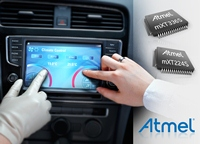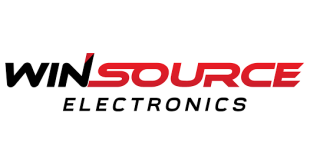 Atmel Corporation has unveiled a new maXTouch family to enable single-layer shieldless designs in automotive centre stacks, navigation systems, radio interfaces or rear seat entertainment systems. The mXT336S has been designed for 7-inch touchscreens, while the mXT224S targets smaller touchscreens and touchpads.
Atmel Corporation has unveiled a new maXTouch family to enable single-layer shieldless designs in automotive centre stacks, navigation systems, radio interfaces or rear seat entertainment systems. The mXT336S has been designed for 7-inch touchscreens, while the mXT224S targets smaller touchscreens and touchpads.
The mXT336S and mXT224S devices are intended to strengthen Atmel’s position as a leading touch supplier to support consumer, industrial and automotive applications with maXTouch. The new devices are AEC-Q100-compliant and fully automotive qualified.
They offer multitouch, faster response times, more precise touches, an enhanced robust operation and lower power consumption. Both devices also provide dedicated embedded functionality that meet current automotive design requirements.
Dedicated firmware and a high signal-to-noise ratio makes these devices ideally suited for very noisy environments. Since only a high signal-to-noise ratio enables detection of touches with a “gloved” finger, the devices provide full support for gloved hand operation on automotive touchscreens.
One key requirement for automotive designs is the support for shieldless sensors. “Conventional touch controllers are unable to handle LCD noise, so an additional shield layer is required to prevent noise coupling,” said Stephan Thaler, Atmel Marketing Director for Automotive Touch Products. “The enhanced noise handling and filtering capabilities of these maXTouch devices means that shields are no longer required, and designers can use single-layer sensors instead of dual or triple layers, which are typical in many current applications. By eliminating an additional layer, designers have a thinner stack which reduces the overall system complexity, lowering the overall cost and power consumption, and resulting in higher product yields during production.”
The mXT336S/mXT224S devices support touch detection, up to 10 simultaneous touches, touch size reporting, single- and dual-touch gesture calculation, communication of X/Y positions, gesture support, and the ability to eliminate unintended touches. Users can perform multi-touch gestures (pinch, stretch, etc.), while unintended touches are rejected, such as a resting hand on the screen. All these key features bring the smartphone experience into contemporary cars.
 CIE Components in Electronics
CIE Components in Electronics



